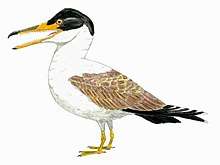Borogovia
Borogovia is a troodontid theropod dinosaur genus which lived during the Late Cretaceous Period, in what is now Mongolia.
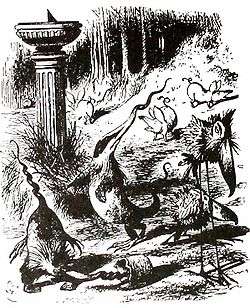
| Borogovia | |
|---|---|
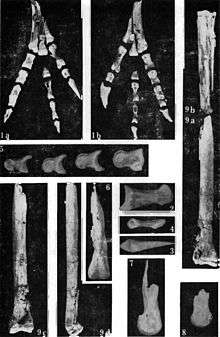 | |
| Leg bones of the holotype | |
| Scientific classification | |
| Kingdom: | Animalia |
| Phylum: | Chordata |
| Clade: | Dinosauria |
| Clade: | Saurischia |
| Clade: | Theropoda |
| Family: | †Troodontidae |
| Genus: | †Borogovia Osmólska, 1987 |
| Type species | |
| †Borogovia gracilicrus Osmólska, 1987 | |
| Species | |
|
†B. gracilicrus Osmólska, 1987 | |
In 1971, a Polish-Mongolian expedition discovered the remains of a small theropod at the Altan Ula IV site, in the Nemegt Basin of Ömnögovĭ province. In 1982, the find was reported by Halszka Osmólska and considered by her to be a possible specimen of Saurornithoides.[1] Later she concluded that it represented a species new to science.
In 1987, Osmólska named and described the type species Borogovia gracilicrus. The generic name is derived from the fantasy creatures known as 'borogoves' in the Lewis Carroll poem "Jabberwocky", in his Alice's Adventures in Wonderland. The specific name is a combination of Latin gracilis, "lightly built", and crus, "shin", in reference to the elegant build of the lower leg.[2]
The holotype specimen, ZPAL MgD-I/174, was found in the Nemegt Formation, dating from the early Maastrichtian. It consists of two lower legs of a single individual, including fragments of both tibiotarsi, the undersides of both metatarsi and the second, third and fourth toes of each foot.[2]
The tibiotarsi have an estimated length of twenty-eight centimetres. Borogovia is about two meters (6 feet) long, weighing some twenty kilograms (forty-five pounds). The tibiotarsus is very elongated. The third toe is narrow. The second phalanx of the second toe is short. The claw of the second toe is short and relatively flat. Osmólska claimed that the second toe could not be hyperextended, and suggested that it had regained a weight-bearing function, compensating for the weakness of the third toe.[2]
Borogovia was assigned by Osmólska to the Troodontidae in 1987.[2]
See also
References
- Osmólska, H., 1982, "Hulsanpes perlei n.g.n.sp. (Deinonychosauria, Saurisichia, Dinosauria) from the Upper Cretaceous Barun Goyot Formation of Mongolia", Neues Jahrbuch für Geologie und Paläontologie, Monatschefte 1982(7): 440-448
- Osmólska, H., 1987, "Borogovia gracilicrus gen. et sp. n., a new troodontid dinosaur from the Late Cretaceous of Mongolia", Acta Palaeontologica Polonica 32: 133-150
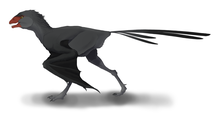

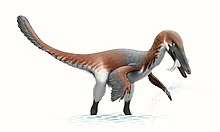
.png)





.png)

